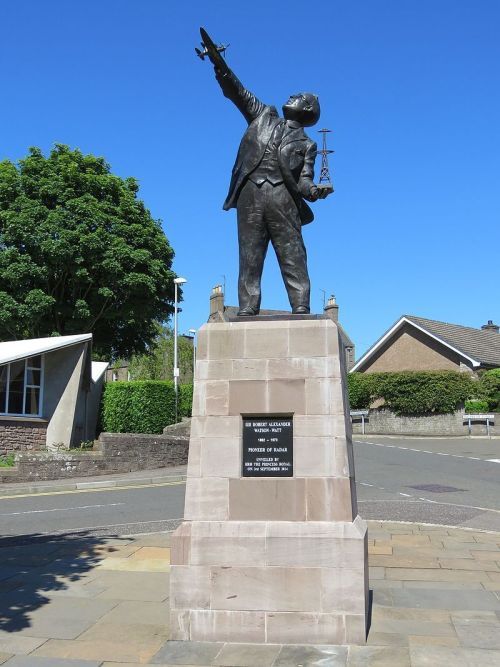Robert Watson-Watt was born on 13th April 1892 in Brechin.Robert had big boots to fill, he cla
Robert Watson-Watt was born on 13th April 1892 in Brechin.Robert had big boots to fill, he claimed he was a descendant of James Watt, although no evidence of any family relationship has been found. But like Watt he went on to make his own important contribution to the world as a pioneer of radar technology. Although he did not invent the idea of radio detection, Watson-Watt was the first to prove it could work on a large scale. Born the son of a carpenter and cabinet maker, he attended Damacre Road School, where he was awarded the ‘Smart Medal’ as ‘Dux’ (top prize-winner) of Brechin High School.He went on to study at University College in Dundee, then part of St Andrew’s University. After he graduated with a BSc in Engineering, his professor William Peddie encouraged him to continue to study 'wireless telegraphy’. This was the common name for radio at the time.Watson-Watt was employed as a meteorologist at the Meteorological Office in 1915.He worked on equipment that could detect thunderstorms, researching how to detect lightning and the signals emitted as it ionises the surrounding air. His research was aimed at giving airmen in fragile aircraft advance warning of potential lightning strikes.In 1916 Watson-Watt had the idea of using a cathode ray oscilloscope in aircraft to measure and plot electrical signals on a display screen. However, his idea was not realised until 1923.In 1924 he moved from Farnborough to work at the newly established research centre at Ditton Park near Slough. The research centre joined with the National Physical Laboratory and Watson-Watt took charge of the Radio Department in Teddington, Middlesex.One of his projects was to investigate radio interference and how it might be used to advantage in wartime. The Air Ministry set up a committee to advance air defences in the UK in 1933. Nazi Germany claimed to possess a 'death ray’, which used radio waves said to be capable of destroying targets in Britain.Watson-Watt was asked to develop a response to this threat – a ray that could destroy German aircraft before they attacked. He believed such a thing was not feasible. However, he believed he could develop a machine able to detect an aircraft in flight before it was visible.The pioneering work that Watson-Watt undertook resulted in the design and installation of a chain of radar stations along the East and South coast of England in time for the outbreak of war in 1939. This system, known as Chain Home and Chain Home Low, provided the vital advance information that helped the Royal Air Force to win the Battle of Britain. -- source link
Tumblr Blog : scotianostra.tumblr.com
#scotland#scottish#invention#inventor


